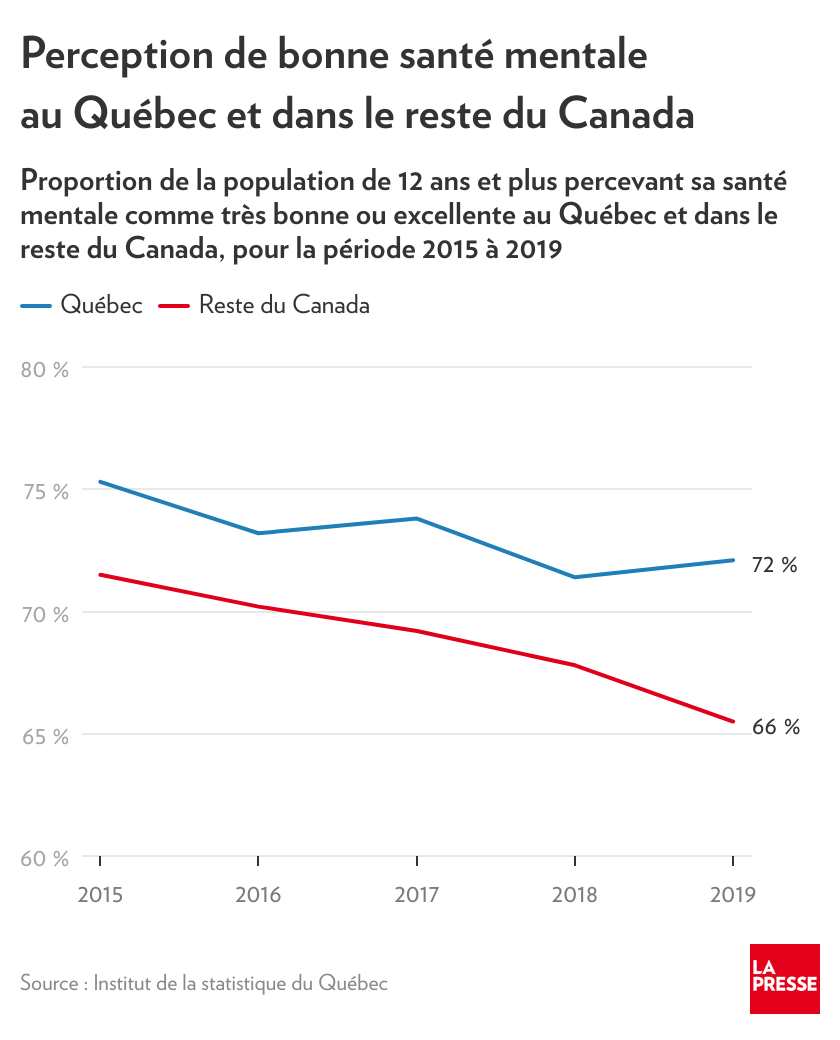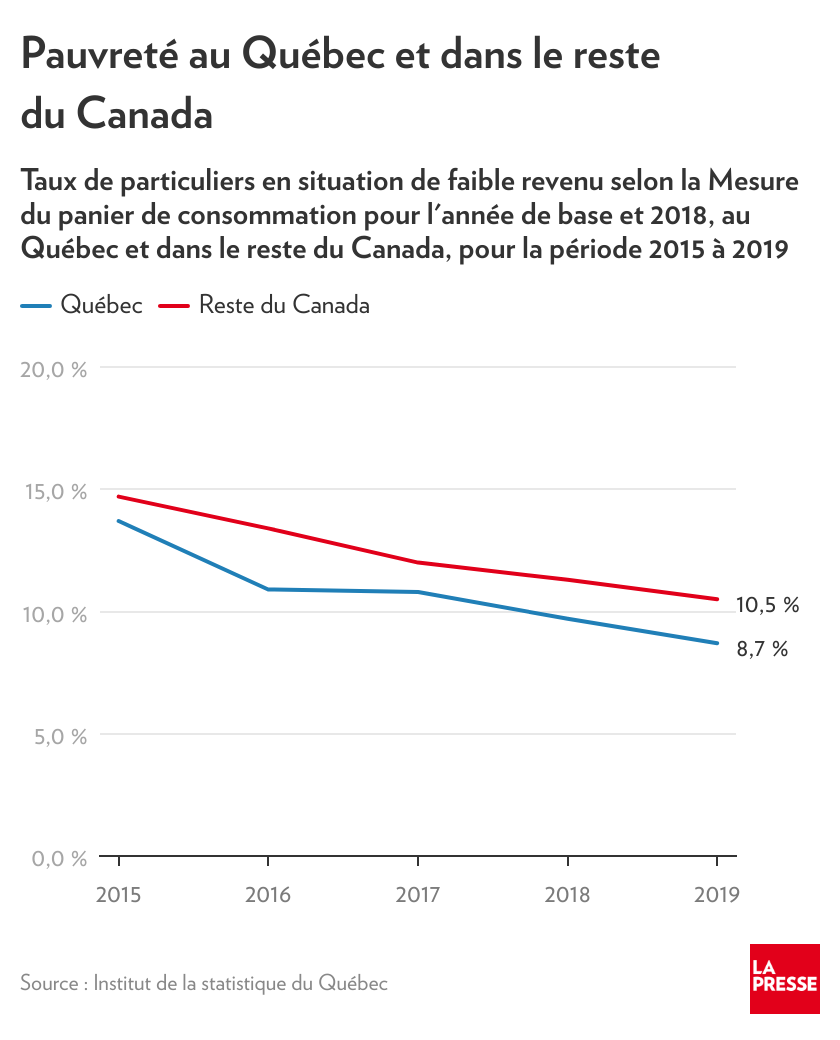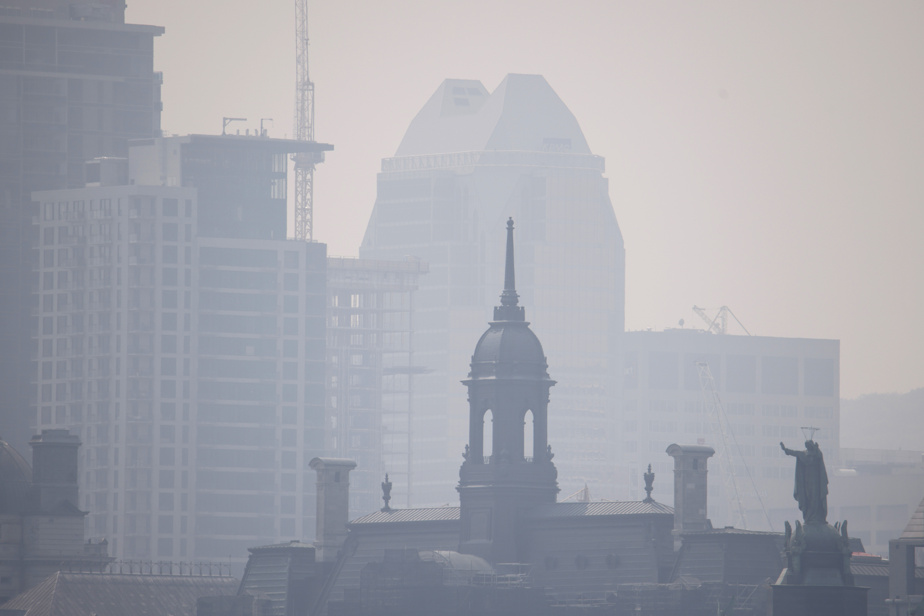Posted at 5:15 p.m.
$46,171

This was the median after-tax income in Quebec adjusted for household size in 2019. This value was over $51,000 for the rest of Canada, but the gap with Quebec has narrowed in recent years.
Fewer violent crimes

Despite a notable recent increase, the long-term trend in serious crime is down in Quebec. The Crime Severity Index (CSI), which measures the volume and severity of crimes reported by police departments, was 51.61 in 2020, up from 92 in 2003.
Deterioration of mental health

Downside: the proportion of people perceiving their mental health as excellent or very good is down in Quebec. In 2015, 73% of Quebecers were of this opinion, compared to 72% in 2019. This is better than in the rest of Canada, where this value was 66% in 2019. “Quebec is posting better results than the rest of the Canada for several aspects of well-being (poverty, employment, crime). On the other hand, the income of individuals is lower in Quebec”, indicates in particular the ISQ.
Declining poverty

The ISQ writes that “the proportion of the population for which the income available for consumption of the family unit is less than the amount of the basket of goods and services provided for by the Consumer Basket Measure (MPC)” is decreasing in Quebec. This proportion was 8.7% in 2019, compared to 13.7% in 2015.
3.1℃

Photo Karene-Isabelle Jean-Baptiste, special collaboration archives
Quebec experienced several heat waves last summer.
As elsewhere in the world, long-term temperature anomalies have been observed in Quebec. This anomaly was up 3.1℃ in 2021 from the normal temperature in XXe century.
83 years old

This is the life expectancy at birth in Quebec in 2021. This is three years more than the life expectancy at birth in 2003.
96 days

Photo Martin Chamberland, LA PRESSE archives
Smog episode in Montreal last July
This is the number of days when the concentration of fine particles in the air exceeded the daily threshold of the World Health Organization (WHO) in Quebec. In 2009, the threshold was exceeded in 254 days.
80%

This is the proportion of 25 to 34 year olds who held a postsecondary diploma in 2021 in Quebec. This proportion was 72% in 2006.
“The socio-economic background of high school students continues, among other things, to be associated with their graduation. Although these inequalities of opportunity persist, they have diminished over the past decade. In addition, the proportion of people aged 24 to 35 with a post-secondary diploma has increased and the life expectancy of the population has increased, two signs that human capital is growing,” writes the Institute. .

